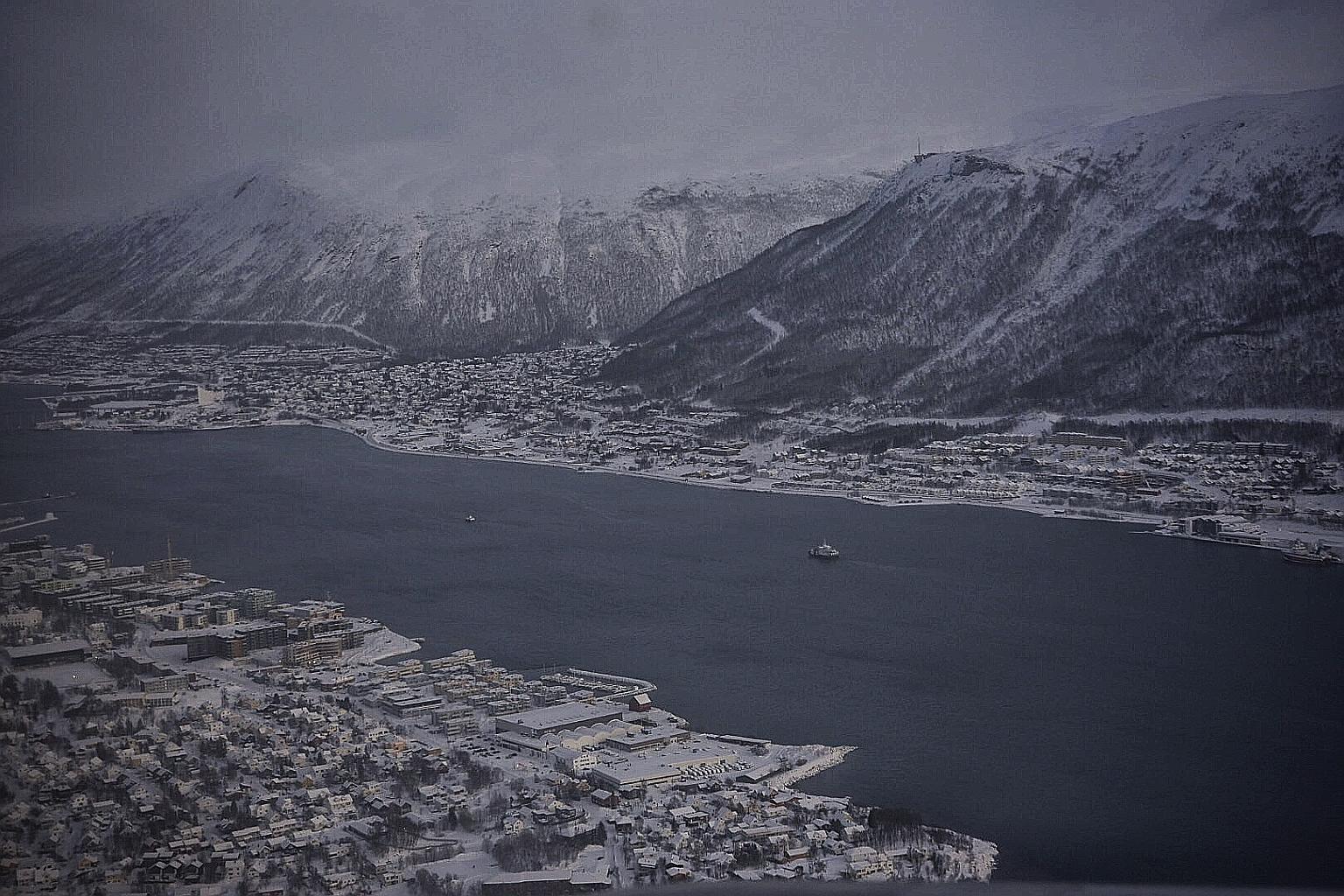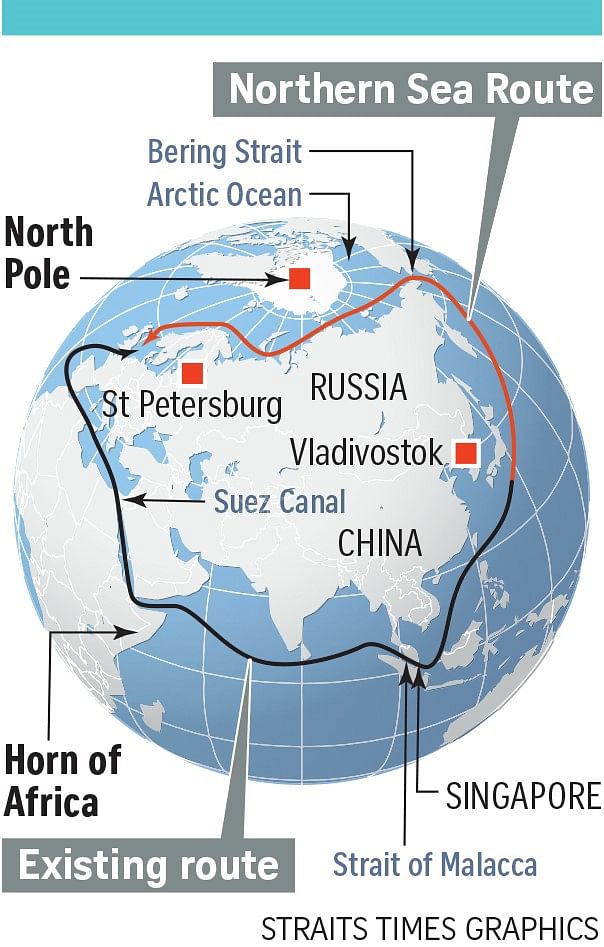Singapore port must stay shipshape as year-round Arctic shortcut looms
Sign up now: Get ST's newsletters delivered to your inbox

Tromso, Norway, is the site of Arctic Frontiers, an international conference that brings over 3,000 delegates together to discuss pertinent Arctic issues.
ST PHOTO: MARK CHEONG
Vanessa Liu
Follow topic:
The year-round opening of the Northern Sea Route in the Arctic is only a matter of time, and Singapore has to race to be cheaper, faster and better than it already is - to safeguard its status as a shipping hub.
This was Minister of State for Foreign Affairs Sam Tan's sentiment regarding the commercial viability of the new passageway, which will provide an alternative route for ships sailing from Europe to ports in South Korea, Japan and China.
The route is expected to cut down travelling time by 30 per cent, compared with the conventional Suez Canal-Malacca Strait route.
Currently, the Northern Sea Route is open only for a few months during the northern hemisphere summer, but a decrease in sea ice cover in the Arctic due to rising temperatures might make it a viable option in the winter in future as well.
The opening of a year-round Arctic shortcut will inevitably reduce the number of ships that pass through Singapore's port - currently more than 130,000 a year.
Mr Tan said that in the initial period, the route would likely be used for transporting oil and gas and other energy sources for countries such as Russia, China and Japan.
While it would be difficult to predict the developments that might take place over the next two decades, he added, there is a need to take action now.
"We cannot wait till things become clearer before we start doing something. That will be too late."
To guard Singapore's commercial interests and economic growth in the light of such developments, the city-state must strive to be the maritime hub for the South-east Asian region, said Mr Tan.
He cited the Tuas mega port, which will employ artificial intelligence and automation to increase efficiency on completion in 2040 - as one of Singapore's strategies to remain competitive in South-east Asia. Ships from countries such as Australia and certain coastal provinces in China are also still likely to use Singapore's port, he added.
Challenges aside, the Northern Sea Route could also present Singapore with opportunities.
Mr Tan pointed out that firms here could be involved in infrastructural projects relating to the opening of the passageway, such as building icebreakers and equipment needed for the extraction of oil and gas in the Arctic region.
Sembcorp Marine, for instance, is currently constructing a 295m-long oil production and storage vessel bound for the Barents Sea. The Johan Castberg is slated to be completed in a few months' time.
Mr Tan is also confident that Singapore will be able to lend its expertise when new ports are developed along the Northern Sea Route.
"We are reputed to be one of the best port developers and port managers in the world. We have strong credentials and expertise in port management, building and construction," Mr Tan said.
"I see a lot of opportunities up north that will help us to open up new economic frontiers for our companies."


